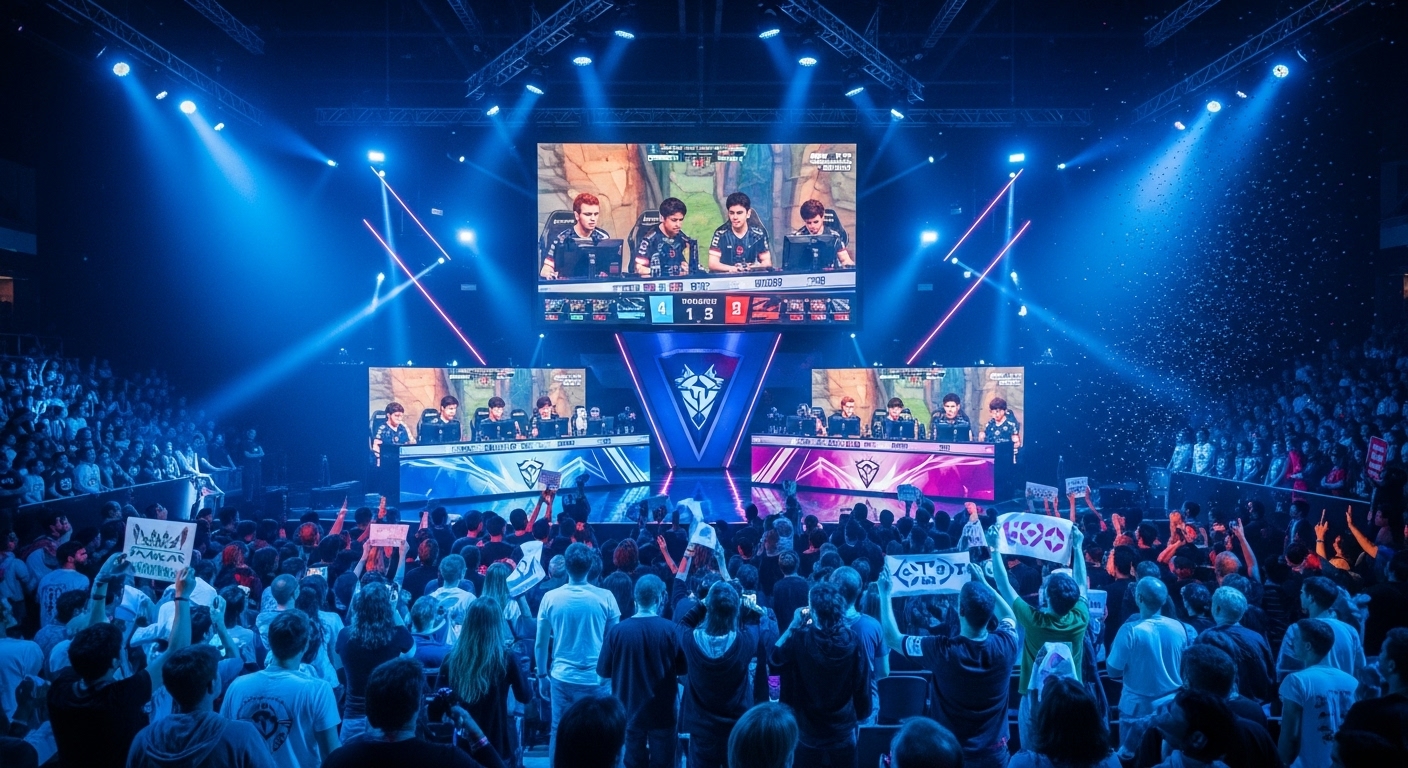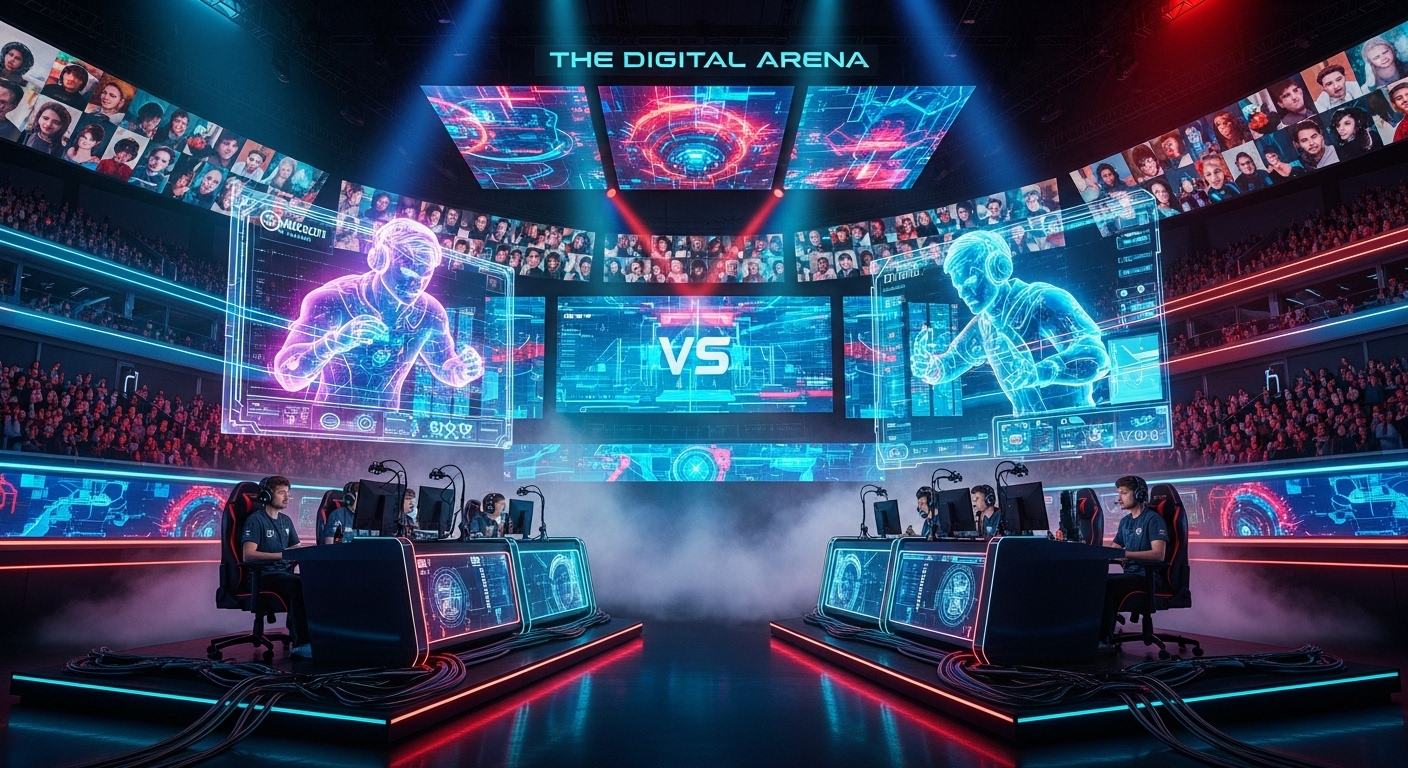Introduction
The rise of mobile gaming has transformed the esports landscape, making competitive gaming more accessible than ever before. No longer confined to high-end PCs or consoles, esports now fits into the palm of your hand, enabling players worldwide to compete professionally with just a smartphone. Mobile esports has grown into a billion-dollar industry, attracting millions of players, tens of millions of viewers, and global tournaments that rival traditional esports in scale.
With so many mobile games competing for attention, it can be challenging to identify which titles truly define competitive excellence. Some games have carved out long-lasting competitive communities, while others attract massive casual audiences but lack a professional ecosystem.
In this blog, we’ll rank the best mobile esports games based on factors like competitive balance, popularity, longevity, prize pools, and global appeal. Whether you’re a player, fan, or esports enthusiast, this guide highlights the games shaping the future of mobile competition.
1. Mobile Legends: Bang Bang
Overview: Developed by Moonton, Mobile Legends: Bang Bang (MLBB) is a 5v5 multiplayer online battle arena (MOBA) game that has dominated Southeast Asia for years. Its fast-paced matches, intuitive controls, and strategic depth make it a mobile esports staple.
Competitive Scene:
MLBB has one of the most structured esports ecosystems for mobile gaming. The Mobile Legends Professional League (MPL) runs in several regions, including Indonesia, Philippines, Malaysia, and Singapore, culminating in the Mobile Legends World Championship (M2 and M3). Top teams from around the globe compete for multi-million-dollar prize pools, attracting millions of viewers.
Why It’s Top-Ranked:
- Strong regional dominance and global appeal.
- Deep strategic gameplay with hero variety and team dynamics.
- Professional leagues with consistent competitive standards.
2. PUBG Mobile / Peacekeeper Elite
Overview: PUBG Mobile, and its China-specific version Peacekeeper Elite, brought battle royale gaming to mobile devices without compromising on competitive depth. Players drop into massive maps, scavenging for weapons and battling to be the last one standing.
Competitive Scene:
PUBG Mobile features the PUBG Mobile Global Championship (PMGC), regional leagues, and national tournaments with enormous prize pools. The game’s esports ecosystem spans Asia, North America, Europe, and the Middle East, making it one of the most international mobile esports games.
Why It’s Top-Ranked:
- Massive global player base and viewer engagement.
- Highly tactical gameplay with teamwork, strategy, and reflexes.
- Regular updates and competitive balance enhancements.
3. Free Fire
Overview: Garena’s Free Fire has become a cultural phenomenon, especially in Latin America, Southeast Asia, and India. This battle royale game is optimized for low-end devices, making it accessible to a broad audience.
Competitive Scene:
Free Fire hosts the Free Fire World Series, regional leagues, and national tournaments, drawing hundreds of thousands of spectators online and in arenas. The game is famous for its fast-paced matches and exciting, unpredictable outcomes.
Why It’s Top-Ranked:
- Accessibility on low-end devices expands competitive reach.
- Fast-paced, action-packed gameplay.
- Large regional tournaments with passionate fanbases.
4. Clash Royale
Overview: Developed by Supercell, Clash Royale combines card-based strategy with real-time multiplayer battles. Matches are short but highly tactical, making it perfect for competitive play on mobile devices.
Competitive Scene:
Clash Royale has an established esports ecosystem with the Clash Royale League (CRL) and international tournaments. The strategic depth of deck-building, timing, and positioning makes it popular among hardcore esports players.
Why It’s Top-Ranked:
- Deep strategy despite short match durations.
- Global competitive leagues with structured seasons.
- A mix of skill, adaptability, and tactical thinking.
5. Call of Duty: Mobile
Overview: Activision’s Call of Duty: Mobile brings the classic shooter experience to mobile devices with multiple modes, including Battle Royale and multiplayer team deathmatch.
Competitive Scene:
The game features the Call of Duty: Mobile World Championship, regional tournaments, and partnerships with esports organizations. Its esports ecosystem is growing rapidly, thanks to the popularity of the franchise and robust mobile controls.
Why It’s Top-Ranked:
- Faithful adaptation of a top-tier console FPS.
- Multiple competitive modes, including ranked ladder play.
- Expanding global esports ecosystem with professional support.
6. Arena of Valor / Honor of Kings
Overview: Tencent’s Honor of Kings (known as Arena of Valor internationally) is one of the most influential mobile MOBAs, particularly in China. The game emphasizes teamwork, hero mastery, and tactical execution.
Competitive Scene:
The Honor of Kings World Champion Cup and regional leagues attract millions of viewers. With strong developer support, these games maintain competitive balance and provide consistent esports opportunities.
Why It’s Top-Ranked:
- Massive player base in China and Southeast Asia.
- Professional leagues and large-scale world championships.
- Strategic depth comparable to PC MOBAs.
7. Brawl Stars
Overview: Another Supercell title, Brawl Stars is a 3v3 team-based game with multiple modes like Gem Grab, Showdown, and Heist. Its arcade-style gameplay is fast, fun, and highly competitive.
Competitive Scene:
The Brawl Stars Championship features regional qualifiers and global finals. Its competitive structure encourages teamwork, map awareness, and hero synergy.
Why It’s Top-Ranked:
- Easy to pick up but difficult to master.
- Diverse game modes encourage varied strategies.
- Vibrant community and growing esports ecosystem.
8. Legends of Runeterra
Overview: Riot Games’ Legends of Runeterra is a competitive card game set in the League of Legends universe. Its strategic depth, deck-building complexity, and dynamic gameplay have made it a rising esports title.
Competitive Scene:
Riot organizes official tournaments, including world championships and seasonal events. Although smaller in scale than some other mobile esports, it attracts dedicated competitive players and fans.
Why It’s Top-Ranked:
- Deep strategy and skill-based competition.
- Integrates beloved League of Legends characters and lore.
- Focused competitive scene with growing international reach.
9. Pokémon Unite
Overview: Pokémon Unite is a 5v5 MOBA that merges Pokémon mechanics with competitive esports elements. Matches are fast-paced and emphasize strategy, teamwork, and character mastery.
Competitive Scene:
The Pokémon Unite Championship Series includes regional tournaments and international finals. While newer than other titles, it’s rapidly gaining a competitive following thanks to its accessibility and the Pokémon brand.
Why It’s Top-Ranked:
- Unique blend of MOBA and Pokémon mechanics.
- Team-oriented gameplay with strategic depth.
- Expanding esports ecosystem with global events.
10. Clash of Clans (Esports Adaptation)
Overview: While Clash of Clans is primarily known as a base-building mobile game, its competitive adaptation, especially in events like the Clash of Clans World Championship, has made it a viable esports title.
Competitive Scene:
Players compete in clans for regional and global recognition. The game emphasizes strategy, timing, and resource management.
Why It’s Top-Ranked:
- Strategic depth that rewards long-term planning.
- Dedicated competitive community with seasonal tournaments.
- Innovative approach to multiplayer competition on mobile.
Factors That Make a Mobile Game Esports-Ready
- Competitive Balance: Fair gameplay ensures skill, strategy, and teamwork determine outcomes rather than pay-to-win mechanics.
- Accessibility: Games that work on a wide range of devices attract larger competitive communities.
- Developer Support: Regular updates, esports integration, and event support maintain competitive integrity.
- Global Appeal: Games that reach multiple regions are more likely to succeed in international tournaments.
- Viewer Engagement: Exciting, fast-paced, and strategic gameplay keeps audiences engaged, essential for esports longevity.
The Future of Mobile Esports
Mobile esports is far from reaching its peak. With the proliferation of smartphones, faster networks like 5G, and improved mobile technology, competitive mobile gaming is becoming more accessible and professional. Developers are investing in esports infrastructures, global leagues, and content creation partnerships, creating a sustainable ecosystem for both players and fans.
Mobile esports will likely continue to grow in regions like Southeast Asia, Latin America, and India, where mobile devices dominate gaming culture. The increasing prize pools, international events, and integration with streaming platforms suggest that mobile esports could rival PC and console esports in the near future.
Conclusion
The world of mobile esports has produced incredible competitive experiences, bridging the gap between casual play and professional competition. Games like Mobile Legends, PUBG Mobile, Free Fire, and Call of Duty: Mobile have established themselves as global esports powerhouses, while titles like Clash Royale, Brawl Stars, and Pokémon Unite continue to expand competitive possibilities.
Mobile esports is more than just a convenient alternative to PC or console gaming; it is a thriving, strategic, and globally recognized competitive ecosystem. As technology advances and more players embrace mobile gaming, these games will continue to define the future of esports, creating opportunities for players, fans, and cities around the world.



